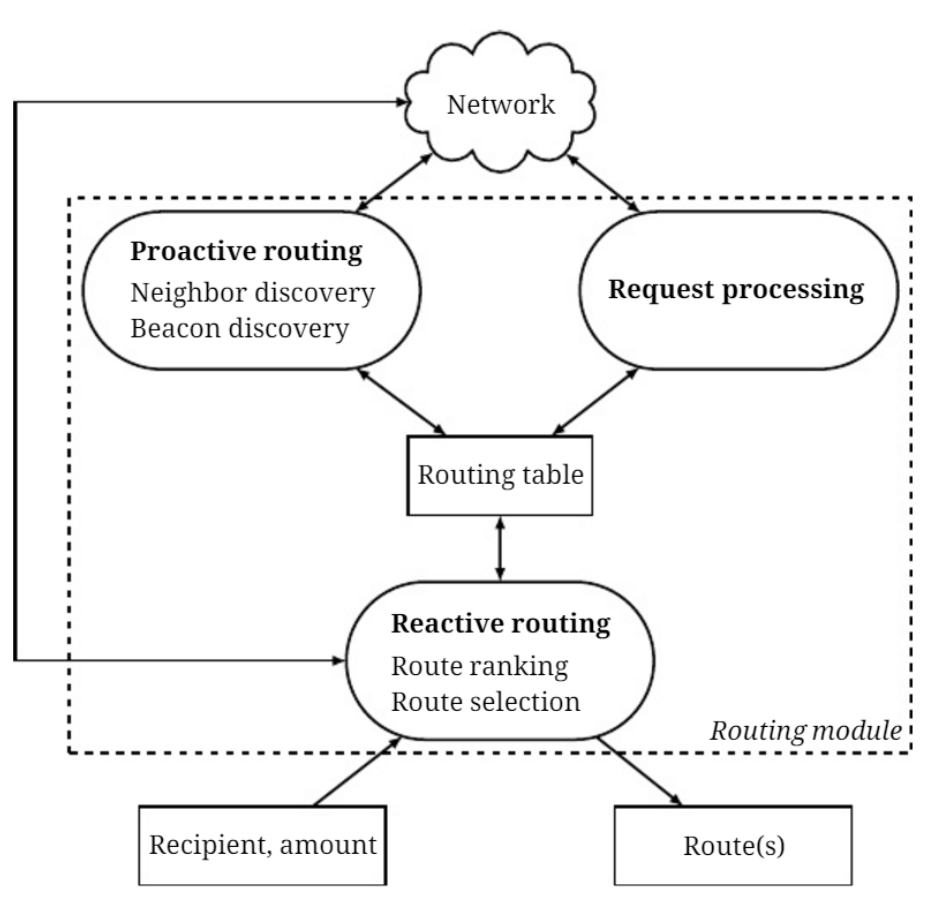Bitfury and Lightning proposed a protocol to speed up Bitcoin transactions.
While many representatives of the Bitcoin community still celebrate the Great Halving, others - tirelessly write code, because the issue of network scaling still worries the minds of the blockchain and Bitcoin developers. For example, the giant BitFury is one of the largest mining companies in the world, the 16nm ASIC chip maker and the creator of the miner lights, in collaboration with the Lightning Network community, published a technical description of the Flare protocol last week, which, according to the authors, should solve some aspects of the problem Bitcoin network scaling.

Lightning Network is a blockchain add-on, which allows users to exchange Bitcoins through special channels, bypassing the blockchain, in order to reduce transaction time and reduce pressure on the Bitcoin network. Transactions are recorded on the blockchain after the recipient wants to withdraw funds outside the Lightning Network channel.
The main problem of LN, which has been repeatedly exaggerated in the bitcoin environment throughout the past year, is the risk of centralizing the entire network. Bitcoin enthusiasts rightly feared that the operators of Lightning Network nodes would become a centralized management device, and the network itself would turn into a large payment system, like Visa, nullifying all bitcoin’s blockchain developers.
Flare is a routing model of the Lightning Network protocol for implementing micropayments in a Bitcoin network, which reduces the risk of network centralization, provided that the core functions of the add-on are performed. The authors of the protocol are Bitfury developers already known in the world of cryptocurrency: Pavel Prikhodko, Slava Zhigulin, Mikola Sakhno and Alexey Ostrovsky, as well as Lightning representative Oaluwa Osontokun.
')
A 40-page document published on the network, in the public domain, contains a technical description of a hybrid two-phase routing algorithm called Flare. The first step is to update the routing scheme, which contains information about the characteristics of the network. The second stage involves the accelerated collection of information in response to a request from the Lightning Network.

Flare's mission is to speed up the search for routes for the Lightning Network, while minimizing the amount of data stored on devices and respecting the principle of decentralization. The launch of the algorithm in the experimental environment will take place at the end of July.
Perhaps the most important part of the Flare concept is network nodes, called “beacons,” which communicate with other nodes within their radius of sight.
Instead of creating a hierarchy of nodes, Flare will allow nodes to select other neighboring nodes in a random order to work with them.
Payment channels can connect hundreds of thousands and even millions of nodes. In this case, the sender and the recipient communicate with each other in a decentralized manner, that is, the network will work even if individual nodes fail.
Thus, the new algorithm will allow the Lightning Network to avoid the risk of centralization, for which the micropayment system has often been criticized, and to significantly increase the capacity of the network as a whole.
The authors of the protocol believe that the Flare algorithm will provide Bitcoin with a bandwidth comparable to that of Visa or PayPal. After its implementation in the test network, Bitfury hopes to reach the minimum capacity level of 400 transactions per second for one channel and more than 100,000 transactions per second on the network as a whole.
What will be the real effectiveness of the Flare algorithm will soon be judged by the results of the test run. In HashFlare, we want to recall that the new algorithm is so far only one of the hypothetically possible solutions to the part of the global scaling problem. Coming in autumn, October 8-9, the third conference called Scaling Bitcoin will be held in Milan, where other promising developments in this direction will be presented, about which we will keep you informed. According to the organizers, special attention during the conference will be paid to the discussion of the miners' problems, in view of the accomplished halving.
Mine is not too late:


Lightning Network is a blockchain add-on, which allows users to exchange Bitcoins through special channels, bypassing the blockchain, in order to reduce transaction time and reduce pressure on the Bitcoin network. Transactions are recorded on the blockchain after the recipient wants to withdraw funds outside the Lightning Network channel.
The main problem of LN, which has been repeatedly exaggerated in the bitcoin environment throughout the past year, is the risk of centralizing the entire network. Bitcoin enthusiasts rightly feared that the operators of Lightning Network nodes would become a centralized management device, and the network itself would turn into a large payment system, like Visa, nullifying all bitcoin’s blockchain developers.
Flare is a routing model of the Lightning Network protocol for implementing micropayments in a Bitcoin network, which reduces the risk of network centralization, provided that the core functions of the add-on are performed. The authors of the protocol are Bitfury developers already known in the world of cryptocurrency: Pavel Prikhodko, Slava Zhigulin, Mikola Sakhno and Alexey Ostrovsky, as well as Lightning representative Oaluwa Osontokun.
')
A 40-page document published on the network, in the public domain, contains a technical description of a hybrid two-phase routing algorithm called Flare. The first step is to update the routing scheme, which contains information about the characteristics of the network. The second stage involves the accelerated collection of information in response to a request from the Lightning Network.

Flare's mission is to speed up the search for routes for the Lightning Network, while minimizing the amount of data stored on devices and respecting the principle of decentralization. The launch of the algorithm in the experimental environment will take place at the end of July.
Perhaps the most important part of the Flare concept is network nodes, called “beacons,” which communicate with other nodes within their radius of sight.
The combination of local nodes and radio beacons allows you to optimize the routing process, helping to route routes along the beacons, with a higher probability of execution
Instead of creating a hierarchy of nodes, Flare will allow nodes to select other neighboring nodes in a random order to work with them.
As a result, it turns out something similar to the "fog of war" in a computer strategy, when we see only a few nodes in a limited radius. Nodes are randomly connected to other nodes outside the radius. This allows them to maintain the highest complexity of the organization, in which the overall size of the network becomes, in fact, unavailable - any of its nodes has access,
- the document says
Payment channels can connect hundreds of thousands and even millions of nodes. In this case, the sender and the recipient communicate with each other in a decentralized manner, that is, the network will work even if individual nodes fail.
Thus, the new algorithm will allow the Lightning Network to avoid the risk of centralization, for which the micropayment system has often been criticized, and to significantly increase the capacity of the network as a whole.
With the help of payment channels, millions or hundreds of thousands of nodes will be connected to each other, which will allow the network to find the path from the sender to the recipient in a decentralized manner.
- explained the co-founder of Lightning Network, Joseph Poon
The authors of the protocol believe that the Flare algorithm will provide Bitcoin with a bandwidth comparable to that of Visa or PayPal. After its implementation in the test network, Bitfury hopes to reach the minimum capacity level of 400 transactions per second for one channel and more than 100,000 transactions per second on the network as a whole.
What will be the real effectiveness of the Flare algorithm will soon be judged by the results of the test run. In HashFlare, we want to recall that the new algorithm is so far only one of the hypothetically possible solutions to the part of the global scaling problem. Coming in autumn, October 8-9, the third conference called Scaling Bitcoin will be held in Milan, where other promising developments in this direction will be presented, about which we will keep you informed. According to the organizers, special attention during the conference will be paid to the discussion of the miners' problems, in view of the accomplished halving.
Mine is not too late:

Source: https://habr.com/ru/post/369481/
All Articles